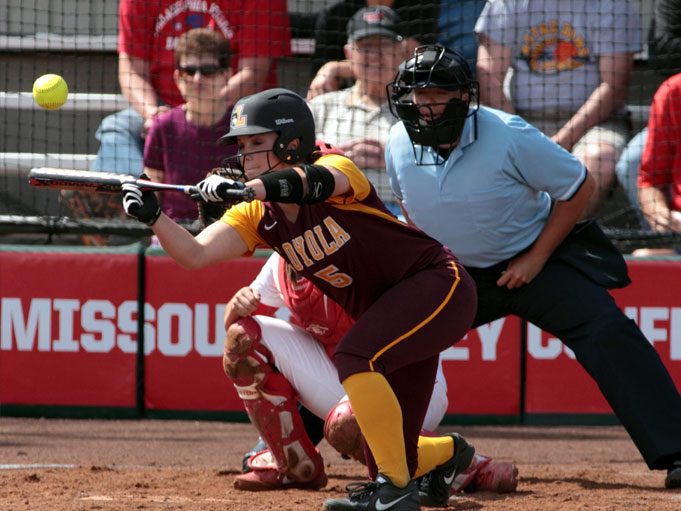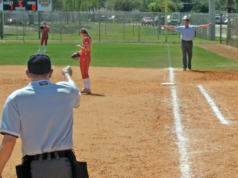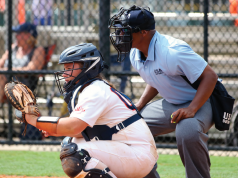With each batter and before every pitch, umpires must do some pre-pitch planning. Where do I go on a hit to the outfield? A hit to the infield? What if my partner chases a ball to the outfield? Who will I go to on a checked swing?
Those basic umpire responsibilities also include knowing the game situation. Umpires should know the basics, like the number of outs, count and score. But it is also good to know or sniff out strategy by the offense and defense. Is it a sacrifice bunt situation or a hit-and-run situation? What are the batter’s tendencies? How are the fielders positioned for each batter? Umpires should know the game situation as much as the players.
Pre-pitch planning the game situation will help you to react to a play much quicker because you have mentally rehearsed that situation in advance. You will instinctively know your plan of action instead of thinking for a moment and then reacting. That kind of exercise benefits all levels of umpires, but is especially helpful to newer umpires.
Be sure to review the following list of points to be focused, alert and ready for each play before it occurs.
1. Number of outs
There are different situations for the number of outs. Each field doesn’t always have a scoreboard, so it is important that you and your partner(s) stay on the same page. If there are two outs, all play after the third out is dead. If it’s the third out of an inning and it’s a close play, you may want to put more emphasis on the call. With fewer than two outs there could be a tag-up or infield fly situation compared to a timing play with two outs.
2. The count
Depending on the count, baserunners are likely to take certain actions. With a full count and two outs, they will take off upon the release of the pitch. An umpire might add emphasis to a call if asked to rule on a checked swing that is strike three. Players or coaches will often ask a base umpire the count or number of outs. Knowing it improves credibility and creates a positive perception. If you don’t know the count, don’t hesitate to ask your partner.
3. Who’s on first?
Know which baserunners you need to watch and where the next play will likely take place. Will it be a force play or tag play? Tag-up situation or not? If a runner is on third late in a close game, will the defense likely make a play on that runner instead of a force out at first?
4. Batter’s objective
With a runner on first and fewer than two outs, the batter may attempt a sacrifice bunt to advance the runner to second. A speedy slap hitter may try to do the same. There are certain situations where a steal may be more likely, especially with a fast runner on base and a good hitter at the plate. The offense may also try a hit-and-run in that kind of situation. And if you sense that runner will attempt to steal or leave as part of a hit-and-run, it’s possible that the runner may be more likely to leave the base before the pitch is released.
5. The score
Is the score tied, lopsided or are both teams within a run or two of each other? The inning and score may determine if an offense will attempt to squeeze a runner from third across the plate or ask the batter to swing away. Is it 9-0 in a 10-run rule game that is in the fifth inning? The team that is trailing will often do everything possible to score a run to keep the game going.
6. Batter history
Is the batter a power hitter or contact hitter? Tracking batter tendencies will help you know what to expect. Is she a long-ball hitter or will she be lucky to hit it past the infielders?
7. Position of defenders
Take a peek at the infielders and outfielders with each batter. Where are they set up? Is the infield in, anticipating a bunt? Are the outfielders also positioned closer to the infield? Has the defense shifted in a certain direction?
8. How is the defense pitching to the batter?
With two outs, a runner on second and a good hitter at the plate, the defense may try to “pitch around” that batter with pitches out of the strike zone. If they walk that batter, so be it. That sets up a force play situation at first, second and third for the next batter. Perhaps the batter often pulls the ball. If that’s the case, the defense may feed that batter with a steady diet of outside pitches.
If you are on the plate or the bases, take a moment before each pitch to not only pre-pitch plan but also get a handle on the game situation to put yourself in the proper mind-set. You will be a step ahead mentally and likely be in a good position to make a call.
What's Your Call? Leave a Comment:
Note: This article is archival in nature. Rules, interpretations, mechanics, philosophies and other information may or may not be correct for the current year.
This article is the copyright of ©Referee Enterprises, Inc., and may not be republished in whole or in part online, in print or in any capacity without expressed written permission from Referee. The article is made available for educational use by individuals.


















